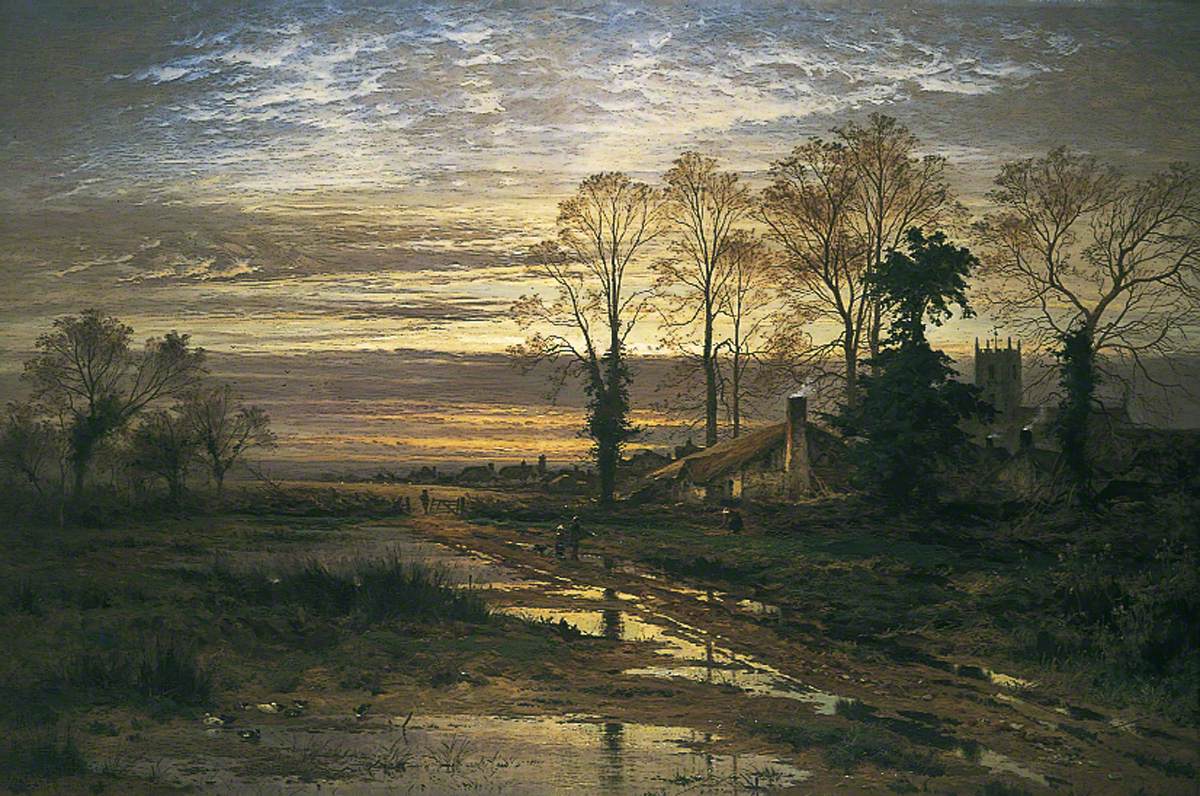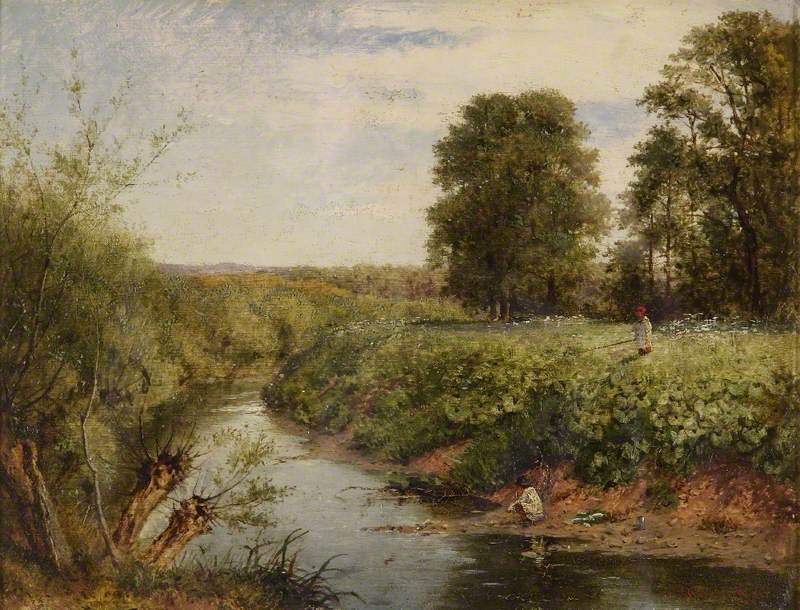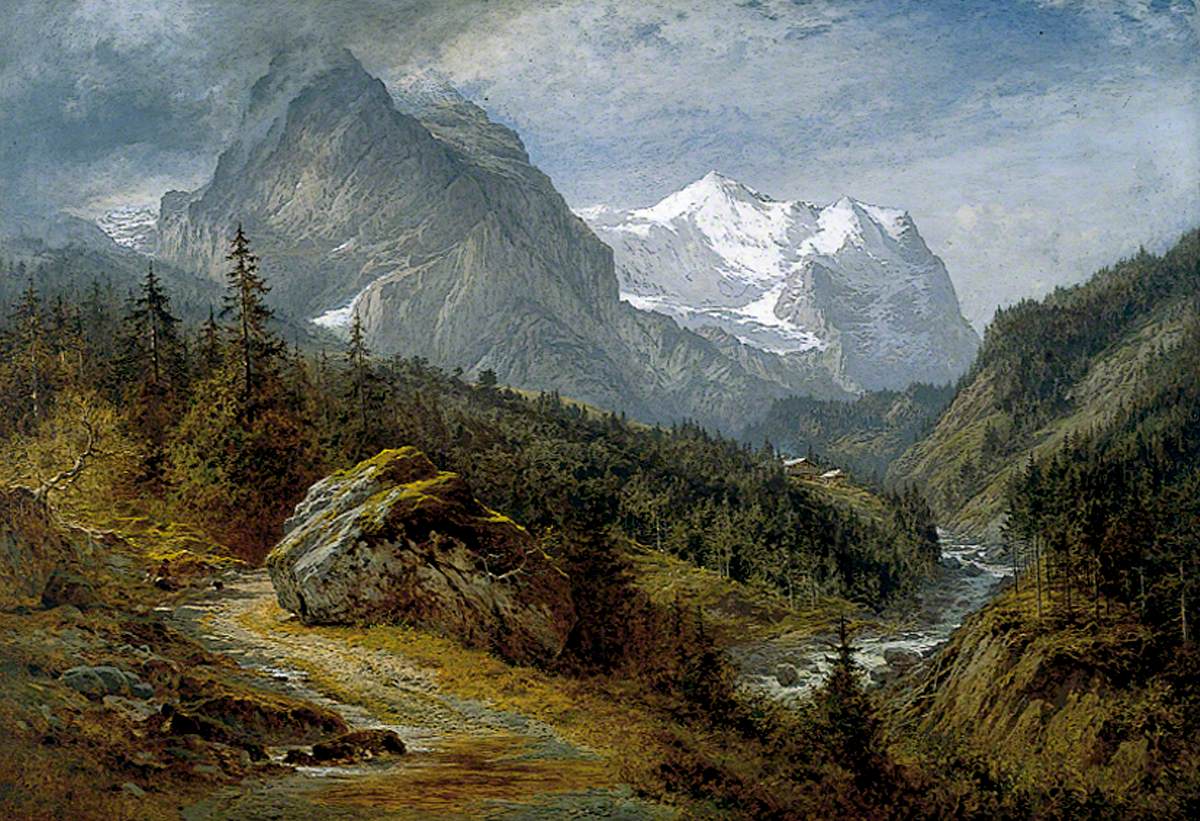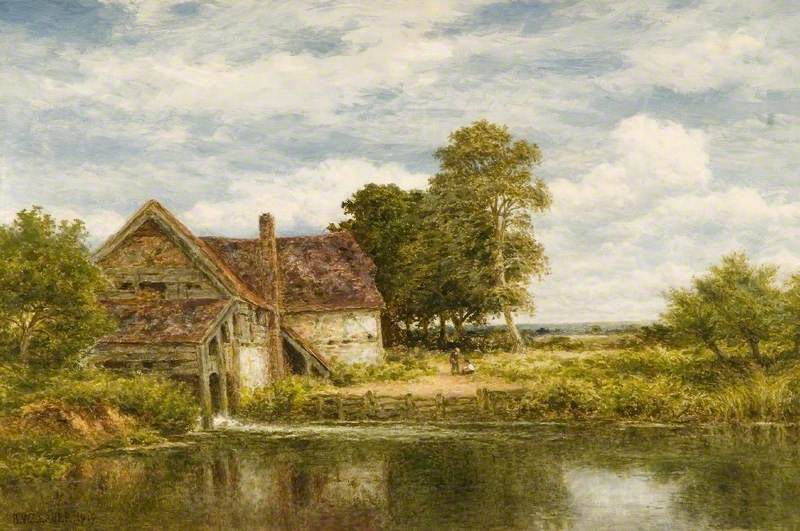You probably haven't heard of Benjamin Williams Leader (1831-1923), and if you have you probably don't rate him very highly. But the Victorians could not get enough of his large scale landscapes: he exhibited at the Royal Academy every year from 1854 until 1922, his popularity peaking in 1881 when February Fill Dyke was considered the best landscape in the show.
Leader began painting landscape early: John Constable was a friend of his father, who stayed with the family on at least one occasion. Leader senior was a keen amateur artist who took his sons on sketching trips around the Worcestershire countryside. Having trained as a draughtsman in the family engineering business, Benjamin began studying at the Royal Academy in 1854 but dropped out before graduating, having already started to sell his paintings. Unusually, he exhibited at the summer show in his first year as a student: 'Cottage Children Blowing Bubbles' sold to an American buyer for the not insignificant sum of £50. As the title suggests his early work was full of observed detail cataloguing rural scenes around his home; small scale and with an easy naturalism they seem bland and banal to twenty-first century eyes.
Leader quickly developed a more romanticised approach. Travelling throughout Britain on the well-trodden artist routes of North Wales, Scotland and the Lake District, he increased the range, size and emotional impact of his canvases. In the 1870s he ventured further afield, visiting Switzerland, but he was never really interested in sublime landscape: mountains remain background features, softened by atmospheric perspective and never threatening to overwhelm the foreground with its detail and incident. The impact comes instead from the size: Autumn in Switzerland is 1.2 x 1.8m.
Leader eventually settled his family in Surrey amongst the anonymous agriculture landscape he preferred. Trees, water and the effects of light were what moved him. A visit to France in 1865 when he had a painting at the Salon, gave Leader an appreciation of Jean-Baptiste-Camille Corot's work which led to a broadening of his own style. He maintained a careful balance between the precise observation of Pre-Raphaelite landscape and the visible brush-marks of French art which was treated with suspicion by many English critics.
Leader also trod his own path in his choice of subject, or rather lack of subject. Paintings like February Fill Dyke exemplify this. The scene is neither picturesque, nor dramatic; despite the figures and buildings there is no real focus or incident; the title is evocative but non specific - we have no idea of where this is. In fact there is little sense that this is an observed piece of nature: the mackerel sky and the carefully composed lines of recession which lead the eye into the warm glow of the horizon are deliberately manipulative. It is a very self conscious piece of elegiac lyricism which manages to create a emotional pull out of a very unpromising corner of nature.
Seen in person today, Leader's landscapes can appear over-sized and over-painted. But they were designed to hold their own on the crowded walls of the Academy, amidst the hype and hustle of the Victorian art market; and were expected to hang on patterned walls amongst the over-ornamented clutter of contemporary drawing rooms. Equally, it is easy to criticise Leader for living too long and being resistant to change. He was still alive to see the death of his eldest son in the First World War, and, if he had chosen to visit, Roger Fry's seminal 1910 exhibition of Manet and the Post Impressionists, but his last landscapes seem resolutely rooted in the memories of his youth. Old Worcestershire Mill could easily have been painted fifty years earlier.






No comments:
Post a Comment